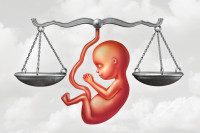Health
Lockdown curtailed tuberculosis patients’ access to health facilities, TB center says
A study shows detection of new tuberculosis cases declined by 50 percent during the lockdown.%20(1).jpg&w=900&height=601)
Arjun Poudel
Detection of new tuberculosis cases has declined by 50 percent ever since the government enforced a nationwide lockdown on March 24, according to an assessment carried out in all seven provinces and Kathmandu Valley.
The drop in the number of TB cases has been attributed to the closure of transportation service which restricted patients’ access to health facilities.
Due to the closure of transportation service and fear of transmission of Covid-19, patients have been unable to reach health facilities for examination and treatment, according to the assessment of the National Tuberculosis Center.
"The ongoing lockdown and Covid-19 epidemic have hamstrung our fight against tuberculosis,"Dr Anuj Bhattachan, director at the center, told the Post.
TB is the seventh leading cause of death in Nepal which accounts for 5,000 to 9,000 deaths every year, according to the center. As many as 18 to 22 deaths are attributed to TB daily. Similarly, 123 new TB cases are reported daily and 27 percent of the cases (34) are missed to be reported.
Bhattachan said that undetected and untreated TB could lead to a major spike in the new cases and deaths.
"Number of TB cases could spike even after the lockdown," said Bhattachan. " We are concerned by the setback caused by the lockdown and Covid-19 epidemic in our fight against the TB. We are working to prevent such risks."
At the United Nations high-level meeting on TB in 2018, Nepal had signed up to the WHO END TB Strategy by 2035. However, the country’s fight against the disease has been far from satisfactory.
According to the National Prevalence Survey of tuberculosis, carried out by a team of national as well as international experts in 2019, the number of TB patients and infection rates of the deadly disease is far more than the estimates. The study shows around 69,000 people across the country get infected with tuberculosis every year, 24,000 more than the World Health Organization estimated.
The UN health agency has estimated that every year 45,000 people get infected with tuberculosis in Nepal, but only around 32,000 patients were identified last year.
Basundhara Sharma, a senior public health officer at the National TB Center said that the study has also shown an alarming dropout rate among TB patients.
"If TB patients discontinued the medicines, then the same medicines they use to take earlier may not work," said Sharma. "And if the patients infected with multi-drug resistant tuberculosis stop taking medicine, they spread the same disease to others."
Treatment success rate of multi-drug resistant TB is only around 70 percent, whereas first line TB's treatment success rate is around 90 percent.
"Our study shows that people are not seeking treatment due to fear of stigma related to Covid-19, as most of the symptoms— chest pain, respiratory problems and fever matched with coronavirus," said Sharma. "All are vulnerable to Covid-19, but we have a challenge to save TB patients in this epidemic”
Public health experts have warned that TB patients discontinuing their medication could lead to a major public health disaster.
“Had the new case finding declined by 50 percent in a normal period, it would be great news,” Dr Dirgha Singh Bom, senior chest physician and TB expert, told the Post. “We know that this is not a normal time and people are being deprived of the services. If not addressed on time this problem could lead to public health disaster.”
According to Dr Bom, cases of multidrug resistant and extensively drug-resistant tuberculosis will increase if the patient stopped taking medicines and diagnosis of new cases declined.
Mortality rate of TB is about three percent more than that of Covid-19, according to public health experts.




 8.79°C Kathmandu
8.79°C Kathmandu














